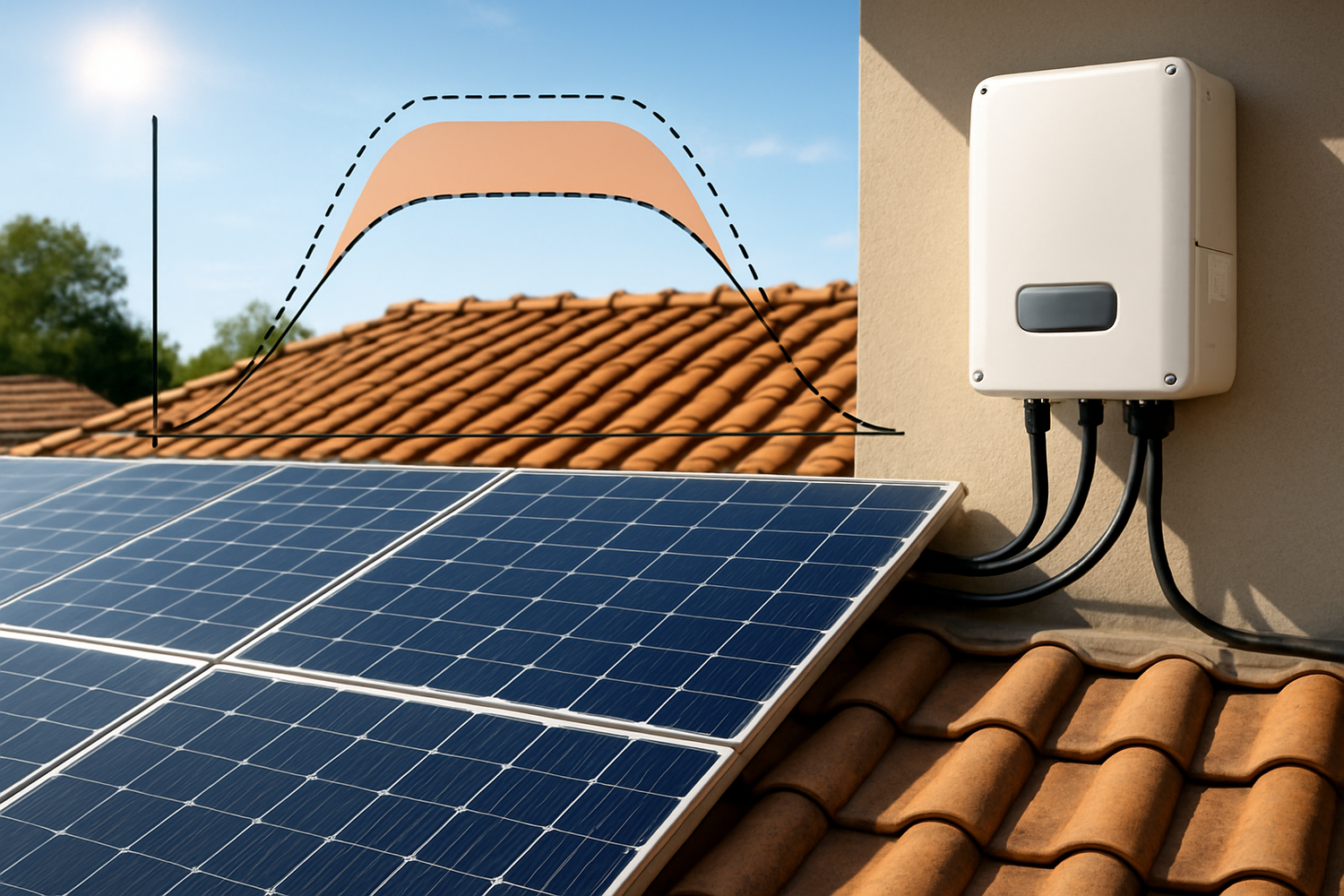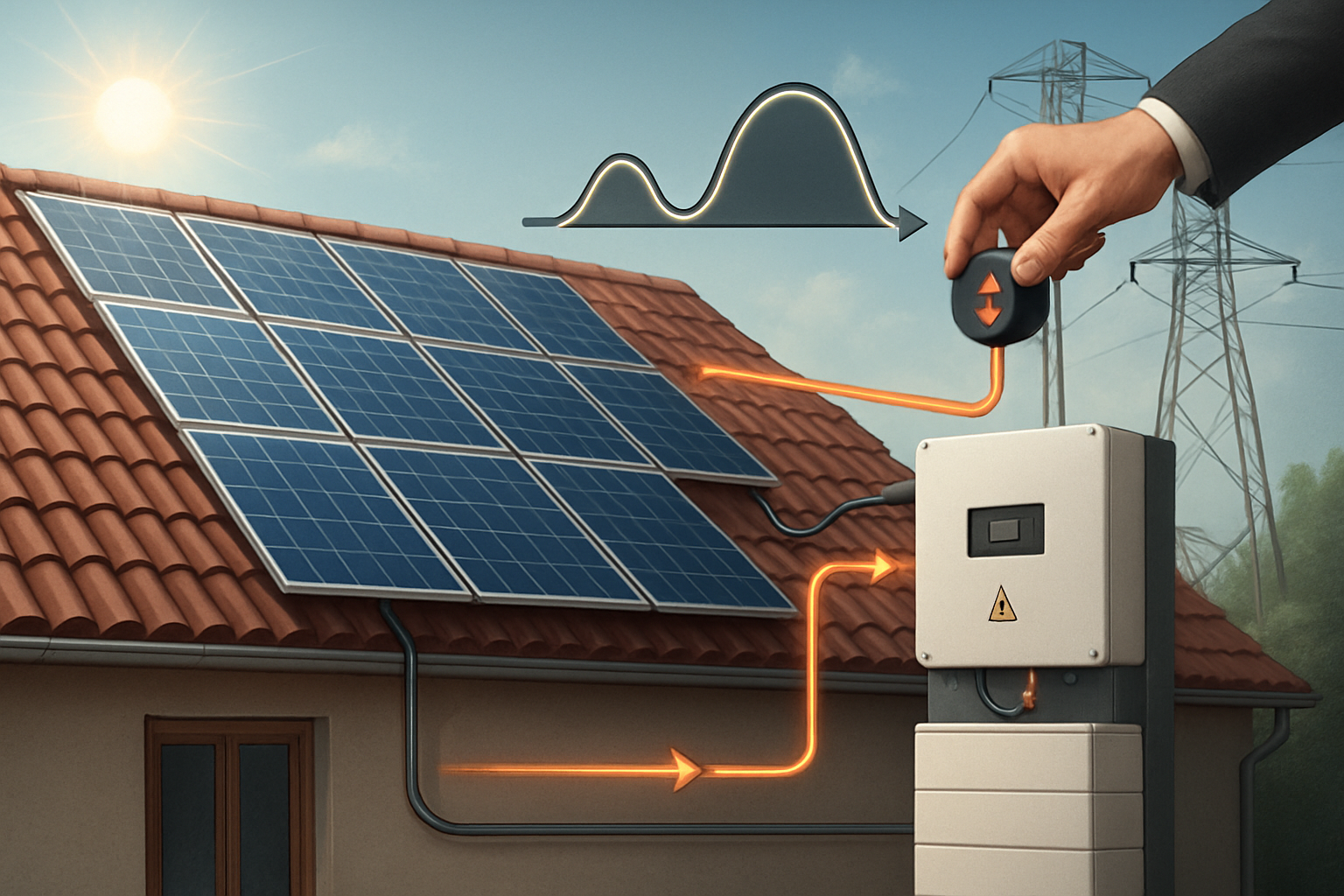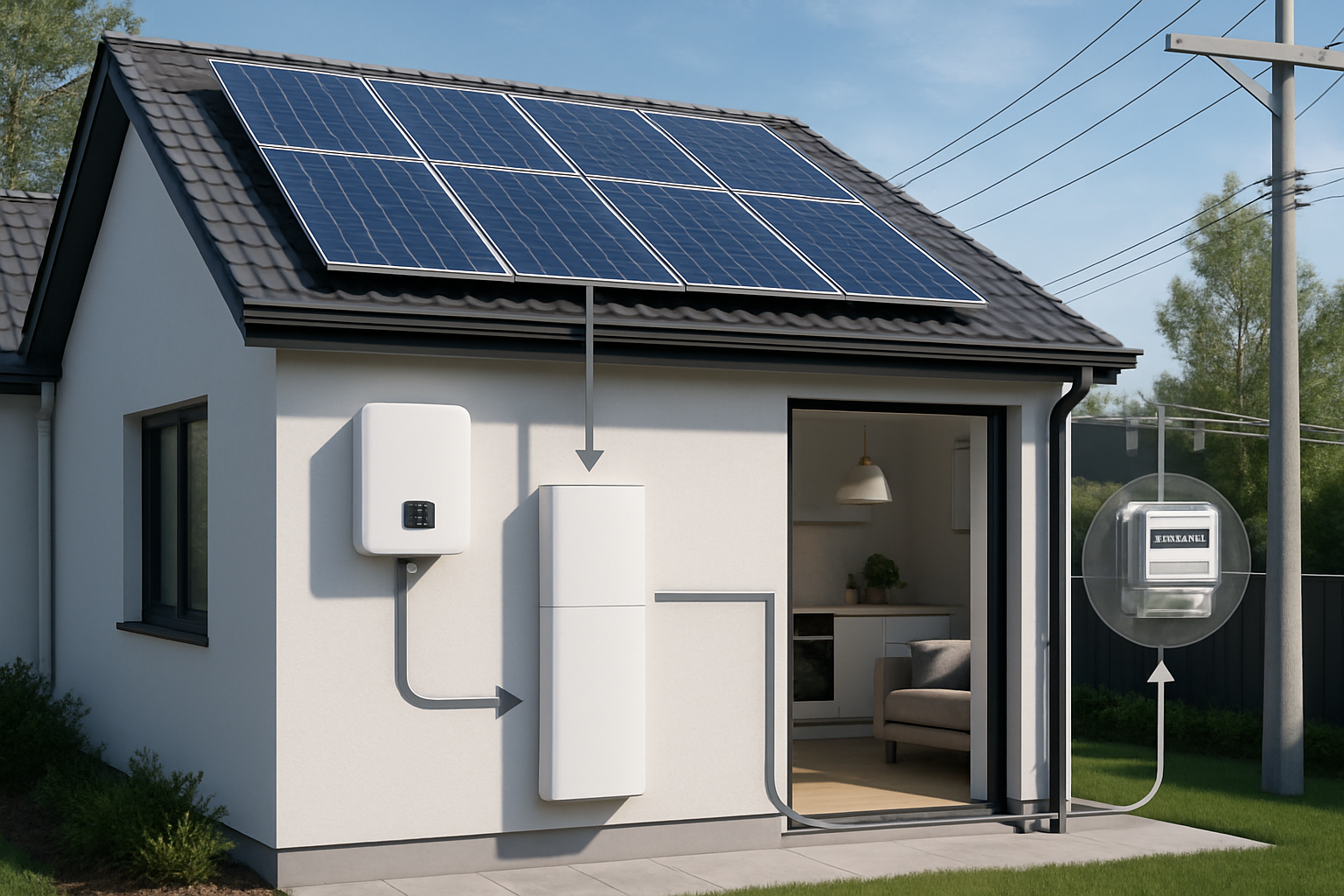Your solar panels work hard to capture sunlight and convert it into electricity. Yet, a common phenomenon known as inverter clipping can silently reduce your system's output. This guide helps you understand inverter clipping and offers practical strategies to manage it effectively, ensuring you get the most from your solar investment.

What is Inverter Clipping and Why Does It Occur?
Inverter clipping happens when your solar panels generate more direct current (DC) power than your inverter can convert into alternating current (AC) power. Every solar inverter has a maximum AC output capacity. When the DC power input from your panels exceeds this limit, the inverter 'clips' or limits the excess power, effectively wasting it.
The Role of the DC/AC Ratio
The DC/AC ratio, also known as the Inverter Loading Ratio (ILR), is a key factor. It represents the total DC wattage of your solar panels divided by the AC wattage capacity of your inverter. For example, a 13 kW solar array paired with a 10 kW inverter has a DC/AC ratio of 1.3. A higher ratio means you have more panel capacity relative to your inverter's output.
While a higher DC/AC ratio can lead to more clipping during peak sun hours, it often results in greater overall energy production throughout the day. This is because the system reaches its maximum output earlier and maintains it longer during 'shoulder hours' (mornings and late afternoons) when sunlight is less intense. According to System Integration of Renewables by the IEA, a PV plant with a larger solar array faces larger clipping losses but gains "extra" energy production during these shoulder hours, resulting in a more valuable plateau-shaped output from a power system perspective.
Factors Contributing to Clipping
- High Irradiance: On exceptionally sunny days, especially around midday, panels can produce maximum power, potentially exceeding inverter limits.
- Low Temperatures: Solar panels become more efficient in cooler temperatures, increasing their power output. A cold, sunny day can significantly boost DC production.
- System Design: An intentionally oversized solar array relative to the inverter (high DC/AC ratio) is a primary driver.
The Impact of Clipping on Your Solar System
Clipping, while sometimes a designed trade-off for increased overall yield, can lead to significant energy losses if not managed properly. These losses directly affect your system's efficiency and the financial returns on your solar investment.
Energy Loss and Reduced Output
The most direct consequence of clipping is the loss of potential energy generation. Every watt clipped is a watt that could have powered your home or been sent to the grid. While some clipping is acceptable for optimizing shoulder hour production, excessive clipping means you are not fully utilizing your panels' capacity during their most productive times.
Financial Implications
Lost energy translates to lost savings or revenue. If your system frequently experiences severe clipping, your electricity bills might remain higher than anticipated, or your feed-in tariff payments could be lower. This extends the payback period for your solar installation and reduces your long-term return on investment.
Strategies to Mitigate Inverter Clipping
Managing inverter clipping involves a combination of smart design choices and integrating advanced energy solutions. You can actively work to capture or reduce these losses.
Optimal DC/AC Ratio Sizing
Choosing the right DC/AC ratio is a balance. While a ratio of 1.2 to 1.3 is often considered optimal for maximizing annual energy yield, it's crucial to consider your specific energy consumption patterns and local irradiance levels. A slightly higher ratio can capture more energy during non-peak hours, even with some midday clipping. IEA research indicates that "downsized inverters allow a more system-friendly PV generation profile," suggesting that a well-chosen DC/AC ratio can smooth out peak production.
Consider the following general guidelines for DC/AC ratios:
| DC/AC Ratio | Typical Application | Pros | Cons |
|---|---|---|---|
| 1.0 - 1.1 | Systems prioritizing minimal clipping | Very little clipping | Lower overall annual energy yield, especially in shoulder hours |
| 1.2 - 1.3 | Most residential and commercial systems | Optimized annual energy yield, good balance | Moderate clipping during peak hours |
| 1.4 - 1.5+ | Systems with high winter production needs, or paired with storage | Higher production in low light, maximizes storage charging | More significant clipping during peak summer days |
Integrating Energy Storage Systems (ESS)
One of the most effective ways to manage clipping is by pairing your solar array with an energy storage system. When your panels produce more power than your inverter can handle, or more than your home needs, the excess DC energy can be directed to charge a lithium battery. This captures what would otherwise be clipped, allowing you to use that stored energy later, such as during the evening or on cloudy days. Our advanced household energy storage systems, which integrate high-performance lithium batteries with hybrid inverters, are designed to seamlessly manage this energy flow, maximizing your self-consumption and energy independence.
Leveraging Advanced Inverter Features
Modern solar inverters offer features that can help. Many hybrid inverters are designed to work efficiently with battery storage, dynamically managing power flow. Some advanced inverters also offer multiple Maximum Power Point Trackers (MPPTs), which can optimize power harvesting from different sections of your array, though this primarily addresses shading rather than clipping from overall overproduction.
Strategic Load Management
You can also reduce clipping by strategically managing your energy consumption. If you have appliances that use a lot of power, such as washing machines, dishwashers, or electric vehicle chargers, schedule their operation during peak solar production hours. This increases your immediate self-consumption, drawing power directly from your panels and reducing the amount of excess energy that might otherwise be clipped.
Practical Steps for Clipping Management
Taking proactive steps ensures your solar system operates at its best and continues to provide value for years.
Regular System Monitoring
Many solar monitoring platforms provide detailed data on your system's performance. Regularly review this data to identify patterns of clipping. Look for flattened power curves during peak sun hours. Understanding when and how much clipping occurs helps you assess if adjustments are needed.
Consulting with Energy Professionals
If you suspect significant clipping or are planning a new installation, consult with experienced solar energy professionals. They can analyze your energy usage, system design, and local solar irradiance data to recommend the optimal DC/AC ratio and suggest solutions like integrating an ESS. They can also help you understand the technical obligations prescribed by grid codes, which can influence optimal DC/AC ratios, as noted by IEA reports.
Future-Proofing with Scalable Solutions
Consider solutions that offer scalability. For instance, an energy storage system can be expanded later if your energy needs increase or if you decide to add more solar panels. This ensures your system remains efficient and adaptable to future changes in energy consumption or grid regulations.
Maximizing Your Solar Investment
Managing inverter clipping is a crucial aspect of optimizing your solar energy system. By understanding its causes and implementing effective strategies—such as selecting an appropriate DC/AC ratio, integrating energy storage, and practicing smart load management—you can significantly enhance your system's performance. This approach not only boosts your energy independence but also ensures you harness every ray of sunshine, making your solar investment truly pay off.
Frequently Asked Questions (FAQ)
What is an ideal DC/AC ratio for a solar system?
An ideal DC/AC ratio often falls between 1.2 and 1.3 for most residential and commercial systems. This range typically balances maximizing annual energy yield with acceptable levels of clipping. However, the optimal ratio can vary based on factors like local climate, specific energy needs, and the presence of an energy storage system.
Does inverter clipping damage the inverter or solar panels?
No, inverter clipping itself does not typically damage the inverter or solar panels. Inverters are designed to safely limit their output when DC input exceeds their capacity. It's a normal operational characteristic, not a fault. The primary concern is the wasted energy, not equipment damage.
Can I completely eliminate inverter clipping?
While you can significantly reduce clipping, completely eliminating it might not be the most economical or efficient strategy. A small amount of clipping can be a sign of an optimized system designed to maximize energy harvest during non-peak hours. The goal is to manage clipping to an acceptable level that maximizes your overall energy production and financial returns.
How do energy storage systems help with clipping?
Energy storage systems, like lithium batteries, capture the excess solar energy that would otherwise be clipped by the inverter. Instead of being wasted, this surplus power charges the battery, making it available for use later when solar production is low or demand is high. This significantly improves the overall efficiency and self-consumption of your solar system.
Is it worth installing more solar panels than my inverter can handle?
Often, yes. Installing more solar panels than your inverter's AC rating (a DC/AC ratio above 1.0) can lead to higher overall annual energy production, especially in areas with variable sunlight or during shoulder hours. While it results in some clipping during peak times, the increased output during other periods often outweighs these losses, particularly when paired with an energy storage system to capture the excess.





Leave a comment
All comments are moderated before being published.
This site is protected by hCaptcha and the hCaptcha Privacy Policy and Terms of Service apply.